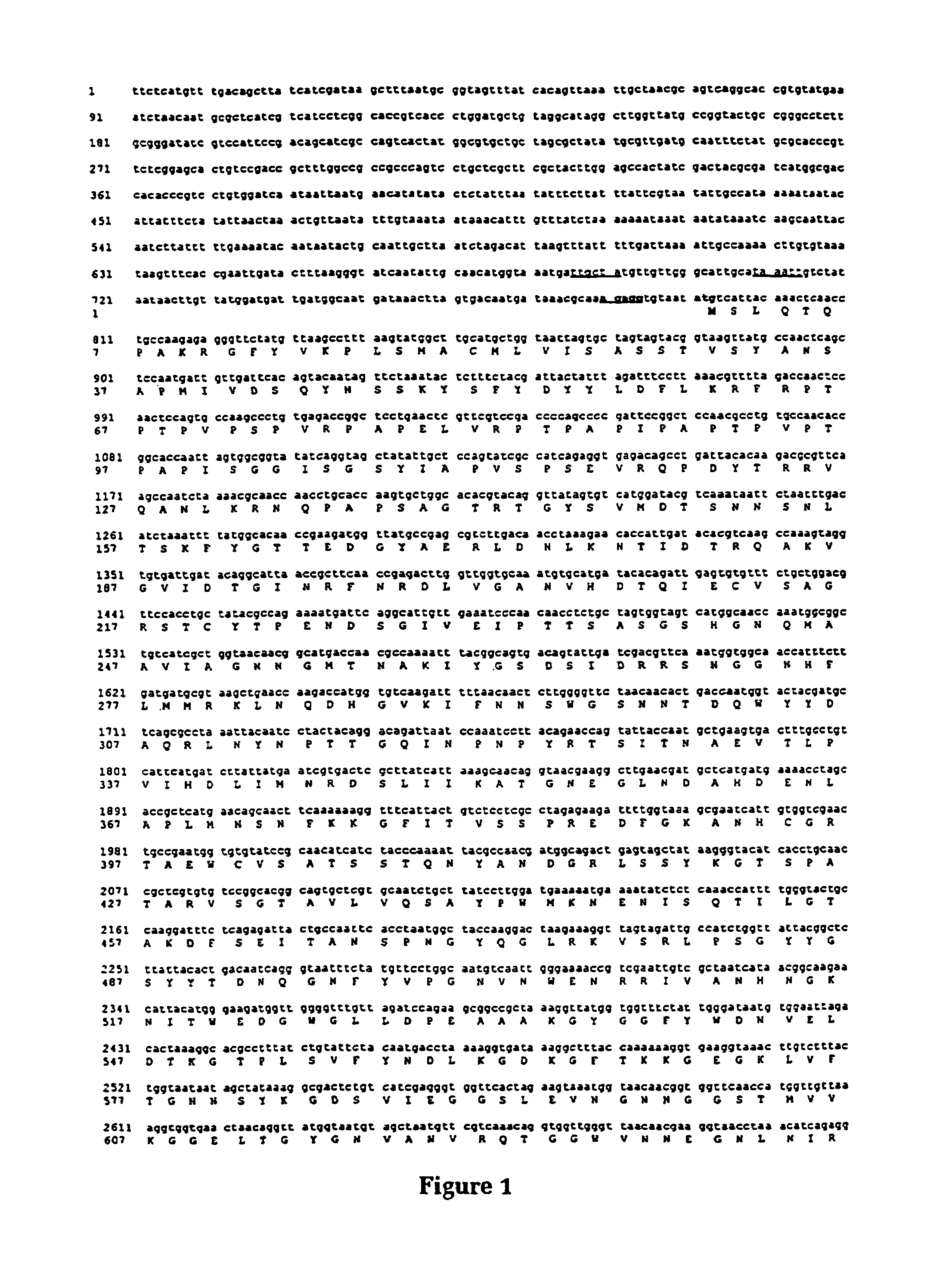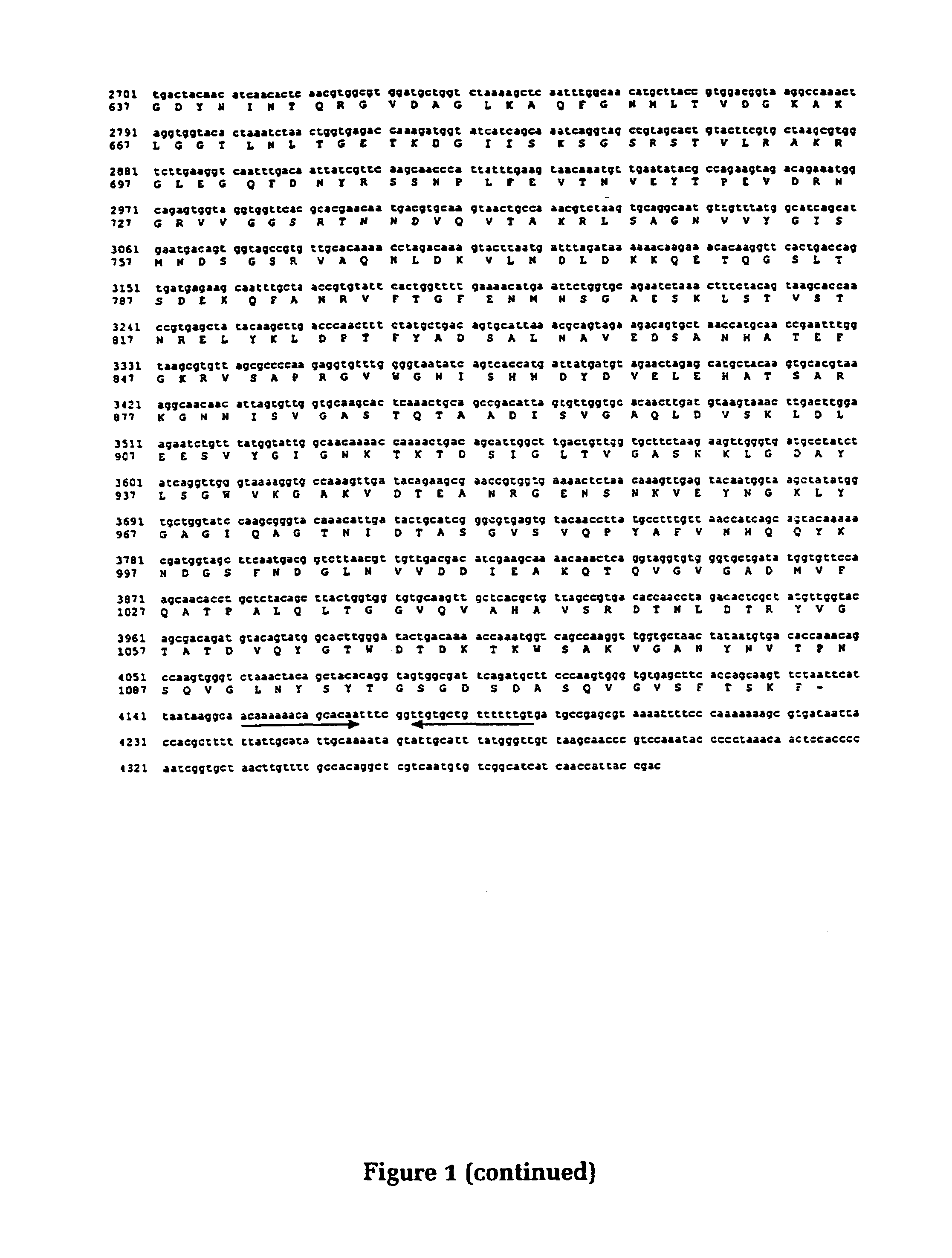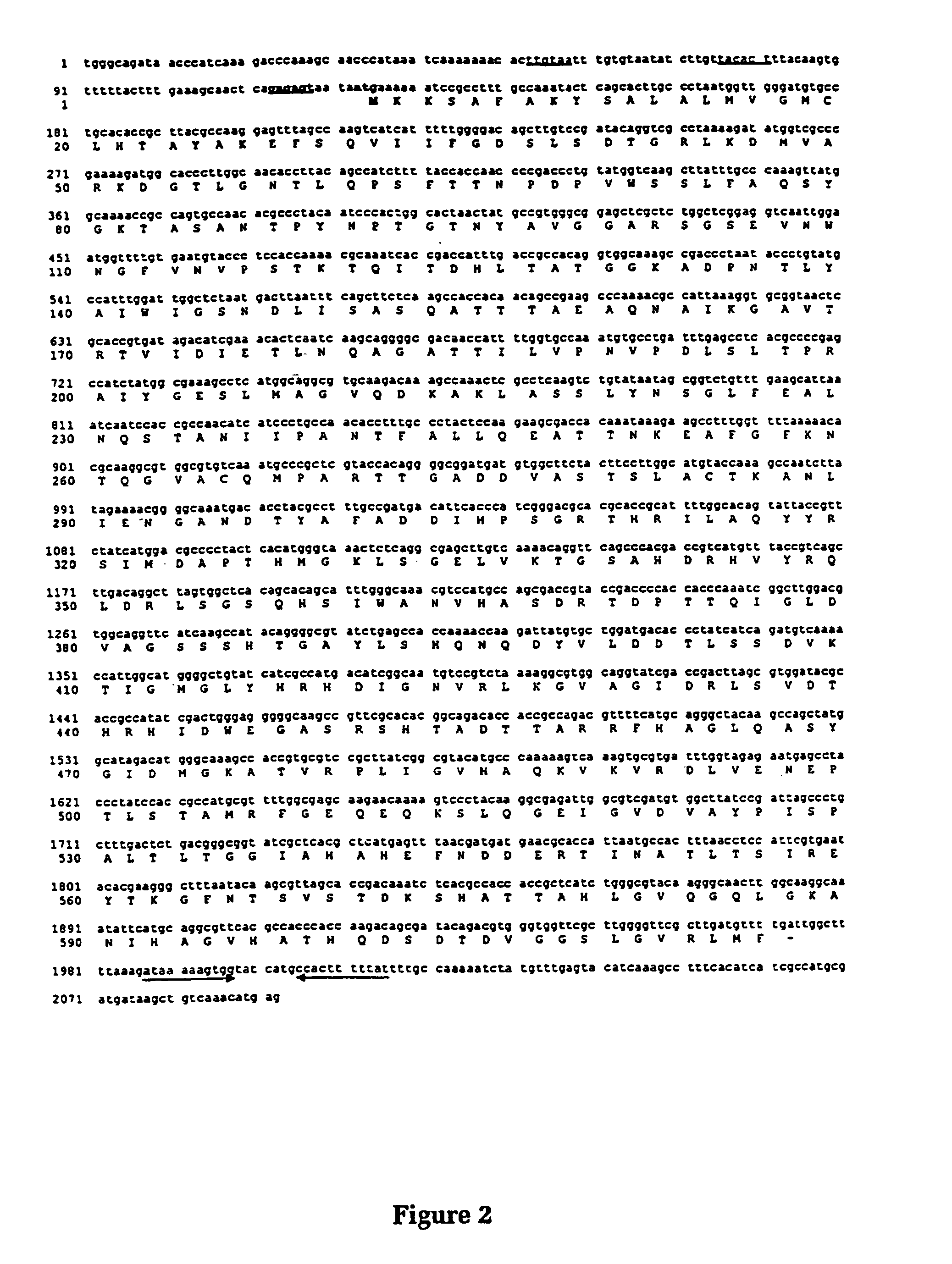Vaccine antigens of Moraxella
a moraxella and antigen technology, applied in the field of moraxella antigens, can solve the problems of limited success of therapeutic and preventive measures in controlling ibk, inability to achieve expression levels of all seven pilus serotypes at levels high enough to be useful for commercial vaccine preparation, and inability to clone the gene encoding the haemolysin or purify the protein to homogeneity
- Summary
- Abstract
- Description
- Claims
- Application Information
AI Technical Summary
Benefits of technology
Problems solved by technology
Method used
Image
Examples
example 1
[0072]This example describes the cloning and characterisation of a protease from Moraxella bovis.
Bacteria and Construction of a Genomic Library
[0073]Moraxella bovis strain Dalton 2 d was a field isolate collected from a bovine eye and characterised by CSIRO Animal Health, Parkville, Australia (6). Escherichia coli strain DH5α has been previously described (7, 8).
[0074]All enzymes were purchased from Promega (Madison, Wis., USA) except where otherwise noted.
[0075]General cloning and DNA techniques were as described (9) unless otherwise noted.
[0076]A genomic library was constructed by carrying out partial Sau3A digests on genomic DNA extracted from M. bovis strain Dalton 2 d using a CTAB method which is outlined below. This DNA was size fractionated using a NaCl gradient (10) and ligated with the cosmid cloning vector pHC79 (11) which had been previously digested with BamHI. This DNA was packaged into lambda bacteriophage heads using the Packagene Lambda DNA packaging system (Promega...
example 2
[0096]This example describes the cloning and characterisation of a lipase from Moraxella bovis.
Bacteria and Construction of a Plasmid Library
[0097]Moraxella bovis strain Dalton 2 d was a field isolate collected from a bovine eye and characterised by CSIRO Animal Health, Parkville, Australia (6). Escherichia coli strain MC1061 has been previously described (16).
[0098]All enzymes were purchased from Promega (Madison, Wis., USA) except where otherwise noted. General cloning and DNA techniques were as described (9) unless otherwise noted.
[0099]A plasmid library was constructed in the cloning vector pBR322 (17). This was done by partially digesting genomic DNA extracted from Dalton 2 d (using the CTAB method described in Example 1) with Sau3A under conditions that maximised the amount of DNA in the range of 1 to 2 kb. This DNA was ligated with pBR322 which had been previously digested with BamHI. The ligated DNA was electroporated (2.5 kV, 200 Ω and 200 μF, for a theoretical time constan...
example 3
Bacteria and Construction of a Haemolysin Clone
[0128]Moraxella bovis strain Dalton 2 d was a field isolate collected from a bovine eye and characterised by CSIRO Animal Health, Parkville, Australia (6).
[0129]All of the M. bovis strains representative of the known pilus serotypes express a haemolytic activity that is detected on horse blood agar.
[0130]Escherichia coli strain degP4::Tn5 has a leaky outer membrane and is defective in proteolysis and has been previously described (24). All enzymes were purchased from Promega (Madison, Wis., USA) except where otherwise noted.
[0131]General cloning and DNA techniques were as described (9) unless otherwise noted.
[0132]A phoA fusion technique that allows for the identification of exported proteins (25) was utilised with some modifications. Genomic DNA from M. bovis Dalton 2 d (prepared using the CTAB method described in Example 1) was partially digested with Sau3A. Restricted DNA was ligated with a series of vectors that allow fusions with a...
PUM
| Property | Measurement | Unit |
|---|---|---|
| temperature | aaaaa | aaaaa |
| melting temperature | aaaaa | aaaaa |
| temperature | aaaaa | aaaaa |
Abstract
Description
Claims
Application Information
 Login to View More
Login to View More - R&D
- Intellectual Property
- Life Sciences
- Materials
- Tech Scout
- Unparalleled Data Quality
- Higher Quality Content
- 60% Fewer Hallucinations
Browse by: Latest US Patents, China's latest patents, Technical Efficacy Thesaurus, Application Domain, Technology Topic, Popular Technical Reports.
© 2025 PatSnap. All rights reserved.Legal|Privacy policy|Modern Slavery Act Transparency Statement|Sitemap|About US| Contact US: help@patsnap.com



